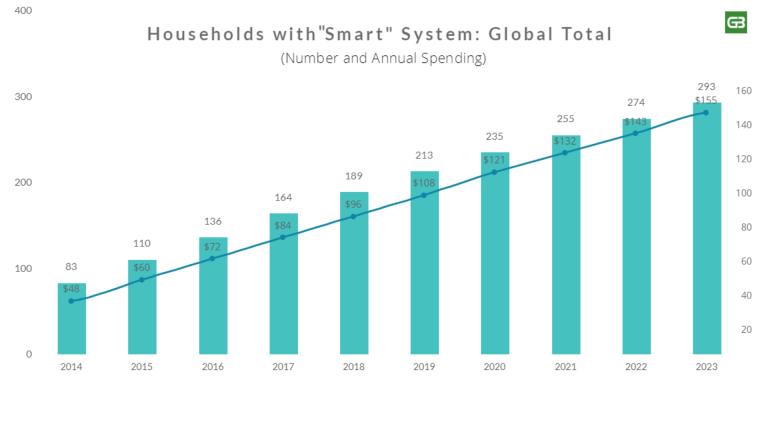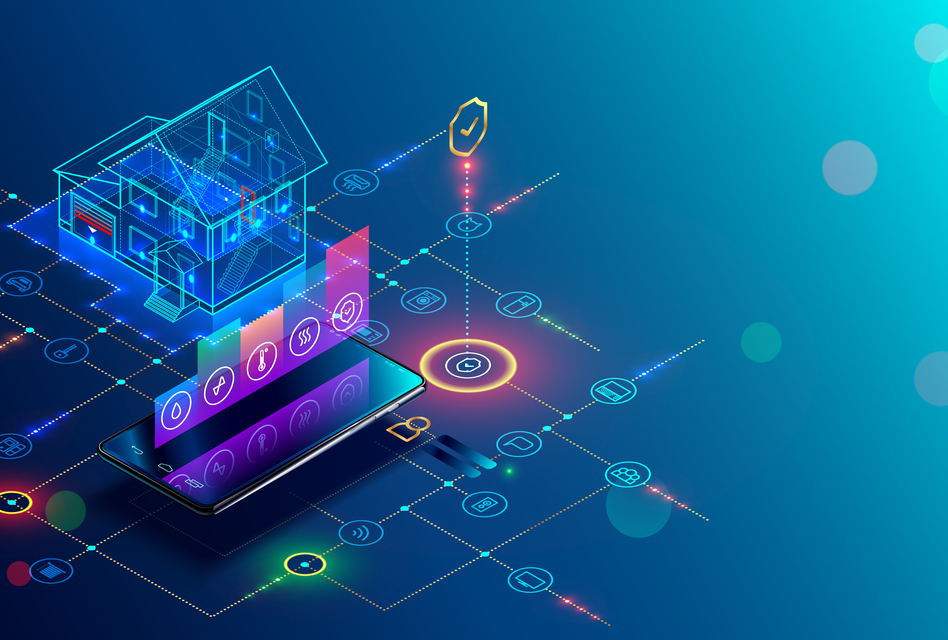Smart homes already became a significant part of the digital revolution. Creating an infrastructure of connected devices that work in unison for people’s daily convenience, they demonstrate vast potential and uncover new challenges for the IoT industry to overcome.
One of those is, of course, security. So far, smart homeowners struggle to safeguard their data from outside intrusion and often fail to do that.
Meanwhile, the number of connected devices at home keeps growing, and so does the number of smart homes. And since smart tools most likely use centralized cloud services with a single access point, they become “honey pots” for hackers.
How can blockchain improve the security of connected devices in smart homes? Let’s explore several case studies to get to the point. But first, key figures to consider.
Smart Home Market: Breaking Down Stats and Facts
In 2017, Multifamily Executive reported that 86% of US millennials were willing to pay more for smart apartments to get autonomous or remotely controlled devices, and 61% of those were concerned about the security of those devices.
Yet the US is not the only hotbed of smart homes; rather, the market’s geography mainly spreads across five regions, including South America, North America, Europe, Asia Pacific, Middle East, and Africa.
At that point, North America reportedly has around 41% of all spending. A few years ago, that region had rising demand for smart home-enabled healthcare solutions, which could be the driving factor for such a dynamic.
To date, over 10 m of connected devices are in use, and Gartner projects that those will hit the 20bn mark in the following year. Dramatic increase, isn’t it?

Average Annual Spending on Smart Homes (with the projections from 2020 to 2023)
Source: GreyB Services
Meanwhile, governments around the world conduct their initiative to streamline the adoption of connected devices across the board. For instance, the UK government set a goal to install smart sensors metering electricity usage per household in 26 m homes by 2020. The Indian government wants to turn the country into one of the largest smart home hubs and plans to develop 500 smart cities.
Also, Australia now works to integrate smart home technologies into the daily life of the elderly population to make it easier and more independent.
Sure, this is just a sneak peek of smart homes’ status quo at a global scale; every day, more events take place. In this light, the problems currently faced by that sector become more perceivable, which again leaves us with the question: how can blockchain improve things here? Let’s judge by the adopters’ experience!
You may also like:
➔ The Power of Blockchain Paired with the Internet of Things
See how the traditional IoT space is transcending through blockchain, with several notable use cases included.
Walmart to Build Security in Smart Homes
Last year, Walmart published a patent describing blockchain usage for secure smart home management. As per Walmart’s concept, homeowners will be able to store information from connected devices in a blockchain-enabled database, where each device will have a digital ID assigned to it.
Through encrypted private keys, owners will be able to configure specific parameters for devices and run transactions on a secure network. More to it, users will be able to dynamically change access levels and parameters for connected devices through a dedicated management portal. By integrating their smart appliances with the portal, they will control access at a distance through IoT. The solution will reportedly store configuration info and change log in a permanent, immutable blockchain database.
From security to the sharing economy; since companies around the world continue exploring the domain, finding new applications and uncovering new business cases, so security is just one aspect of the many.
IoTeX and NKN to Redefine Sharing Economy
A while ago, IoTeX and NKN jointly presented a blockchain-based PoC for the sharing economy, through which homeowners could control and share their smart home data in a completely different fashion.
The project is designed as a low-cost, decentralized alternative to Airbnb and similar platforms having personal data at high fees, that stores short-term home rentals. In the demonstration, the company showed how compact IoT devices, like smart locks, thermostats, and lights, operate with blockchain.
Homeowners could remotely control and authorize access to their smart homes through a distributed p2p network. Authorized guests could also manage connected devices, seamless and frictionless — all via a mobile app.
In this way, both homeowners and renters could exert full control over their smart apartments and data, including access management and security, lighting and temperature, and “add-on” rooms and devices, with high convenience and rental user experience. Homeowners could securely share access with multiple people, and the system enforced the terms between parties with smart contracts.
IIIT to Prevent Water Wastage and Pollution in Households
Though not directly tied to smart homes, the following solution can be described as “related.” The Indian Institute of Information Technology (IIIT) integrates IoT and blockchain to manage water supplies at homes with “smart” tanks.
In the case of traditional tanks, users tend to forget to power off the tank when it’s filled, leading to water wastage. With Smart Tank, this problem might go away forever; the device automatically powers on the pump to fill the tank with water when its levels fall below a certain point and powers the pump off once the tank has been filled, thus preventing overflowing.
More to it, Smart Tank autonomously checks water purity before filling the tank. Once in a period, the water’s quality is checked for compliance with a set of predefined requirements, and if the water is clean, it sends it to the grid. If the water is polluted, a user might clean it with a dedicated water cleaning system and then send it for another test. Thus, homeowners maintain water quality in supplies.
Smart Tank stores data collected from multiple sensors on a blockchain. This allows preventing forgery in bills when purchasing water from tanks. The system also has micro-transactions performed on-chain through smart contracts, hence billing is instant.
You may also like:
➔ Smart Contracts to Automate Workflows
Find what blockchain-enabled autonomous applications the world has witnessed so far.
In the End, Can You Feel Right at Home with Blockchain?
Blockchain improves security and rationalizes operations in smart homes. It powers up transactions in the sharing economy and establishes a secure environment for the remote control over connected devices. It prevents hacks and data breaches, all to make our daily lives more convenient.
Today, we brought just several examples, but all those show that blockchain will keep proving itself useful across your connected lamps, blinds, smart locks, TV sets, other home appliances… And even outside your house, providing you with timely, rational, and quality water supplies and doing even more in the perspective than you could ever imagine.





Blockchain Insights
Join our mailing list to receive OpenLedger Insights publications weekly.
Thanks! Please check your inbox to verify your email address.
By clicking “Subscribe”, you’re accepting to receive newsletter emails from OpenLedger Insights every week. You can easily update your email or unsubscribe from our mailing list at any time. You can find more details in our Privacy Policy.